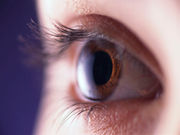Non-ocular factors such as sleep disturbance, metal health status also linked to symptoms at one year
WEDNESDAY, Dec. 28, 2016 (HealthDay News) — Severe dry eye symptoms and ocular pain at baseline are associated with persistent severe dry eye symptoms one year later, according to a study published online Dec. 22 in JAMA Ophthalmology.
Erin S. Ong, from the Miami Veteran Administration Medical Center, and colleagues conducted a longitudinal study among patients with a wide variety of dry eye symptoms and signs. The authors examined the change in dry eye symptom severity during one year and conducted baseline risk factor analysis for severe dry eye symptoms at one year.
The researchers found that 44.8 percent of the 120 patients with no symptoms or mild-to-moderate symptoms at baseline progressed to more severe symptoms at one year. Among the 62 patients with severe symptoms at baseline, 74.2 percent reported that severe symptoms persisted at one year. Severe dry eye symptoms, ocular pain, and neuropathic pain-like ocular symptoms were baseline ocular risk factors for severe dry eye symptoms at one year. Sleep disturbances, mental health status, non-ocular pain, and medications were non-ocular risk factors. The most significant risk factors in a multivariable analysis were sleep apnea (odds ratio [OR], 3.80; 95 percent confidence interval [CI], 1.00 to 14.49), Dry Eye Questionnaire 5 score (OR, 1.15; 95 percent CI, 1.02 to 1.30), and posttraumatic stress disorder score (OR, 1.04; 95 percent CI, 1.01 to 1.08).
“Our results suggest that pain perception and severity are important when evaluating and managing dry eye,” the authors write.
Full Text (subscription or payment may be required)
Copyright © 2016 HealthDay. All rights reserved.








